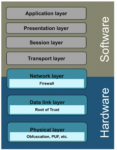Khaled Maalej is founder and CEO of VSORA, a provider of high-performance silicon chips for GenerativeAI and L4/L5 autonomous driving (AD) applications based in France. Before founding VSORA in 2015, Maalej was CTO at DiBcom, a fabless semiconductor company that designed chipsets for low-power mobile TV and radio reception… Read More
Arteris Frames Network-On-Chip Topologies in the Car
On the heels of Arm’s 2024 automotive update, Arteris and Arm announced an update to their partnership. This has been extended to cover the latest AMBA5 protocol for coherent operation (CHI-E) in addition to already supported options such as CHI-B, ACE and others. There are a couple of noteworthy points here. First, Arm’s new Automotive… Read More
The Data Crisis is Unfolding – Are We Ready?
The rapid advancement of technology, including generative AI, IoT, and autonomous vehicles, is revolutionizing industries and enhancing efficiency. At the same time, such advances also generate huge amounts of data to be transmitted and processed to make sense and provide value to consumers and society as a whole. In essence,… Read More
Arm Automotive Update Stresses Prototyping for Software Development
If you were at all uncertain about auto OEM development priorities, the answer is becoming clear: to accelerate/shift left automotive software development and debug. At 100M lines of code and accelerating, this task is overshadowing all others. A recent Arm update from Dipti Vachani (SVP and GM for the Automotive Line of Business)… Read More
Fault Simulation for AI Safety. Innovation in Verification
More automotive content 😀
In modern cars, safety is governed as much by AI-based functions as by traditional logic and software. How can these functions be fault-graded for FMEDA analysis? Paul Cunningham (GM, Verification at Cadence), Raúl Camposano (Silicon Catalyst, entrepreneur, former Synopsys CTO and now Silvaco CTO)… Read More
Weebit Nano Brings ReRAM Benefits to the Automotive Market
Non-volatile memory (NVM) is a critical building block for most electronic systems. The most popular NVM technology has traditionally been flash. As a discrete part, the technology can be delivered in various form factors. For embedded applications flash presents scaling challenges, however. A new NVM technology developed… Read More
Simulating the Whole Car with Multi-Domain Simulation
Next significant automotive blog in a string I will be posting (see here for the previous blog).
In the semiconductor world, mixed simulation means mixing logic sim, circuit sim, virtual sim (for software running on the hardware we are designing) along with emulation and FPGA prototyping. While that span may seem all-encompassing,… Read More
Challenge and Response Automotive Keynote at DVCon
Keynotes commonly provide a one-sided perspective of a domain, either customer-centric or supplier-centric. Kudos therefore to Cadence’s Paul Cunningham for breaking the mold in offering the first half of his keynote to Anthony Hill, a TI fellow, to talk about outstanding challenges he sees in verification for automotive … Read More
Automotive Electronics Trends are Shaping System Design Constraints
Something is brewing in automotive electronics. Within a one-month window most of the product announcements and pitches to which I am being invited are on automotive topics. Automotive markets have long been one of the primary targets for suppliers to system designers, but this level of alignment in announcements seems more … Read More
Designing for Security for Fully Autonomous Vehicles
With the advent of IoT devices, vehicles have become increasingly interconnected, offering enhanced automation, connectivity, electrification, and shared mobility. However, this progress also brings forth unprecedented challenges, particularly in ensuring the safety and security of automotive electronics. The complexity… Read More












Quantum Computing Technologies and Challenges